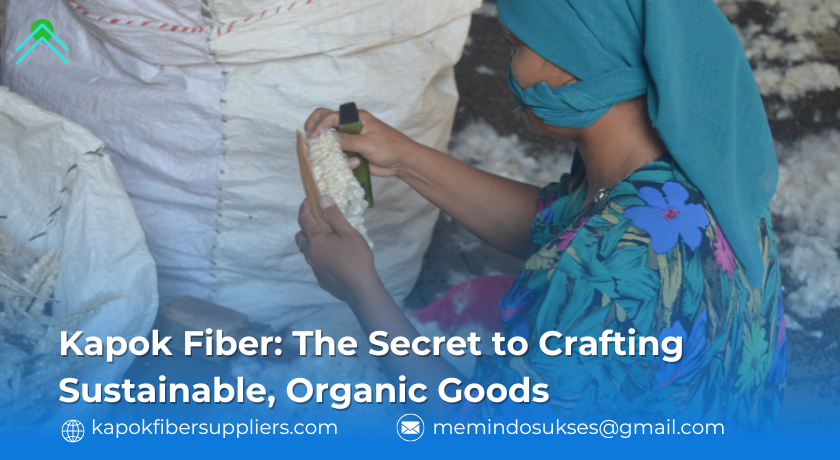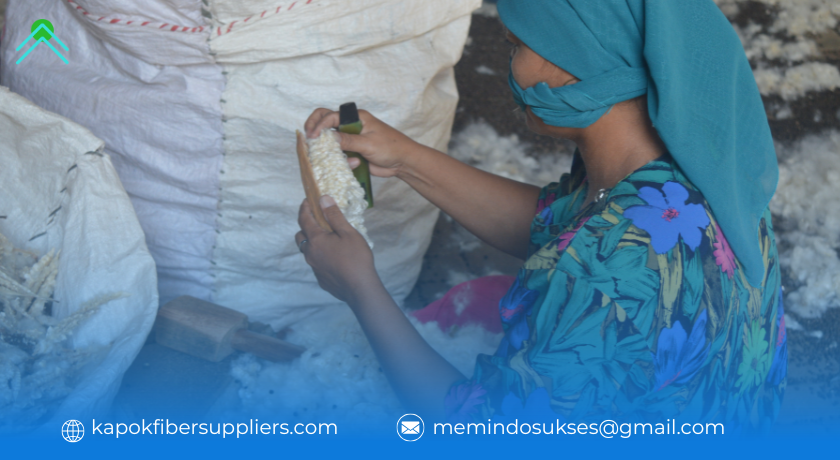
In the age of eco-conscious manufacturing, finding sustainable materials is essential. Kapok fiber, a 100% natural resource, is taking the spotlight as a game-changer in the world of organic products. But what makes kapok so special, and why should businesses consider integrating it into their product lines? Let’s dive into the incredible benefits and versatility of kapok fiber, and why it could be the perfect solution for your next eco-friendly project.
Understanding Kapok Fiber: The Natural Wonder
At first glance, kapok fiber might look like any other natural material. However, it has unique properties that set it apart from the rest. Kapok comes from the fluffy seed pods of the kapok tree, a tall, tropical species that thrives in humid climates. The fiber inside these pods is lightweight, soft, and naturally resilient.
Unlike synthetic materials that contribute to pollution, kapok fiber is completely biodegradable. It breaks down easily in nature, leaving no toxic residue behind, making it the perfect choice for eco-conscious businesses and consumers alike.
What Makes Kapok Fiber Stand Out:
- Lightweight but Durable: Despite its light texture, kapok has an incredible strength-to-weight ratio, providing a balance of comfort and durability.
- Organic and Chemical-Free: Kapok fiber is grown naturally, without the use of pesticides or fertilizers, making it an excellent choice for organic products.
- Sustainable: Kapok trees thrive without the need for irrigation or extensive care, meaning they have minimal environmental impact.
Top Reasons to Use Kapok Fiber in Your Products
Businesses and consumers alike are searching for alternatives to synthetic materials—and kapok fiber is quickly becoming a top contender. Here’s why you should consider using it in your products.
1. Sustainable from Seed to Product
Kapok fiber’s journey from tree to product is environmentally friendly every step of the way. The kapok tree is incredibly resilient, requiring very little water and no pesticides to thrive. After harvesting, the fiber is processed without the use of harsh chemicals, preserving its natural qualities. By choosing kapok, you’re not just selecting a material, you’re making a choice to support a sustainable supply chain.
2. Perfect for Eco-Friendly Bedding and Upholstery
Kapok is widely used in pillows, mattresses, and other bedding products because of its lightweight, soft nature. Unlike synthetic fibers, kapok provides a hypoallergenic filling, making it an ideal choice for people with sensitive skin or allergies. It naturally resists dust mites, mold, and bacteria—great for anyone seeking a cleaner, more natural sleeping environment.
3. Biodegradable and Non-Toxic
Kapok fiber’s biodegradability makes it an eco-friendly alternative to non-degradable synthetic materials. If disposed of incorrectly, synthetic fibers can remain in landfills for hundreds of years, leaching harmful chemicals into the environment. Kapok, on the other hand, decomposes naturally, leaving no trace behind.
4. Versatile Applications Across Multiple Industries
Kapok is not just for bedding. It is used in a wide range of industries, from textiles and insulation to automotive and packaging. Its resilience and soft texture make it perfect for clothing, pet beds, upholstery, and even eco-friendly packaging solutions. No matter the industry, kapok fiber’s versatility allows businesses to integrate it into many types of products.
How to Find Quality Kapok Fiber Wholesale
To ensure the best results, sourcing high-quality kapok fiber is crucial. Here’s a quick guide to finding reliable kapok fiber suppliers:
1. Ethical Sourcing and Fair Practices
Choose suppliers who practice ethical sourcing. Make sure the kapok is harvested responsibly and that workers involved in its collection are treated fairly. Ethical suppliers often provide transparency on their sourcing practices, so don’t hesitate to ask about their supply chain.
2. Check for Certifications
Look for organic certifications when sourcing kapok fiber. This guarantees that the fiber has been grown without harmful chemicals, which is essential for producing truly natural products. Organic certifications also ensure that the supplier follows sustainable farming practices.
3. Quality Assurance
Before committing to large orders, always request samples to test the quality of the fiber. Quality kapok fiber should be clean, soft, and free of contaminants. A reputable supplier will be happy to provide samples and detailed product information.
The Future of Kapok Fiber in a Green Economy
As the demand for sustainable materials continues to rise, kapok fiber is poised to play a pivotal role in the future of manufacturing. With its growing popularity in everything from home goods to apparel, kapok is on track to be a key player in eco-friendly product development.
By integrating kapok fiber into your product line, you’re not just creating eco-friendly products; you’re also joining a global movement toward sustainability. Consumers are looking for brands that prioritize sustainability, and kapok provides an opportunity to meet that demand with a natural, organic material that aligns with eco-conscious values.
Conclusion
Incorporating kapok fiber into your products offers endless benefits—from its sustainable sourcing to its biodegradable properties. It’s a natural, organic material that’s perfect for a wide range of applications, from home goods to packaging, and everything in between. By choosing kapok fiber, you are making a responsible choice for both your products and the planet. As the demand for sustainable alternatives grows, kapok is ready to help shape the future of eco-conscious manufacturing.

